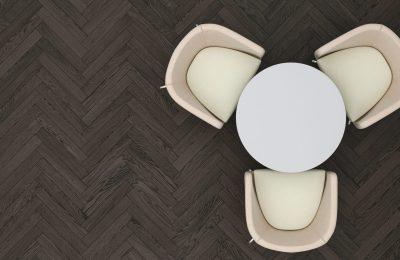In the spa industry, hiring the right employee always benefits owners By Brooke SmithFor employers, hiring a qualified employee can…
Water works
Without it, is a spa really a spa?
There is some debate about just where the word spa originated. Is spa an acronym for Sanus per Aquam, the Roman practice of bathing in hot natural spring water, or a shortened form of espa, the Walloon word for fountain?
One thing is certain, however: spas and water are inextricably linked. Whether water is present in a therapeutic, cleansing or merely aesthetic capacity, there is no question that the element has an important impact on the overall spa experience.
“You cannot call yourself a spa if you don’t have any water treatments,” says Jean-François Pouliot, president of Le Spa Infinima. “I would go further and say that you should have a [hammam] installation like we do if you want to call yourself a spa,” he adds.
A Sea Of Options
Pouliot is referring to Infinima’s hammam experience, which includes a Finnish sauna, a steam bath, a cold rain shower, and a hot therapeutic bath. The whole thing takes about one hour during which clients switch from hot to cold water sources before they have any other spa treatment done. “It lets the body relax before a massage and it’s an added value,” Pouliot says.
There are many spa treatments that incorporate water in some way, but among the most coveted are natural hot springs and the use of thermal mineral waters. Where spas do not have access to natural springs and mineral-rich water sources, they improvise.
“Most of the Nordic spas are relying more on the effect of cold and hot than on the quality of the water,” explains Sam Margulies, founder and consultant with Atmosphere Spa Design. For spas in places like Iceland and Israel that are close to natural highly mineralized water sources, the answer is obvious, says Margulies. For North American spas, the options are more limited. They can either import water from the original source or try to recreate it by adding herbs, Epsom salts, and minerals to temperature controlled pools. The bottom line, says Margulies, is that spas shouldn’t promise what they can’t deliver. On the other hand, if there is a therapeutic benefit to the client soaking in a warm pool filled with enough Epsom salts to allow them to float, does it matter that the water doesn’t come from the Dead Sea itself? “If you go to a spa and when you come out of the spa you feel relaxed, you feel peaceful, you feel rejuvenated, well you know what, it’s a good effect,” Margulies says.
Sante Spa Victoria in British Columbia features an outdoor therapeutic mineral pool that contains saline water to help draw lactic acid from clients’ aching muscles. The pool overlooks a mountain vista and provides a tranquil area where guests can unwind before and after their treatments, says Sante Spa director Jennifer Spencer.
At Spa Infinima, Pouliot says that the balneotherapy treatment is especially popular among their guests. It involves soaking in a large thermal tub in a fragrant mixture of powdered herbs in a variety of flavours. There is the Bain aux sels parfumés à la rose (rose-scented salt bath), the Bain lacté de Cléopâtre (Cleopatra’s milk bath) and their most requested, the Bain à l’eucalyptus (eucalyptus bath). The balneotherapy treatment can be packaged together with a body treatment, and preceded by a trip to the hammam.
“I think people naturally gravitate to water therapies,” says Spencer. “History shows us that people have been using bathing rituals and mineral waters, and drinking mineral water to help with ailments, relaxation, and socializing [going] back to prehistoric times.”
“I’m a big fan of Watsu,” says Robert Cass, cofounder of Spaformation, a salon and spa industry consulting firm. He describes the treatment as “an assisted in-water massage” and confesses he has nodded off in the middle of one. “Imagine your body going limp and somebody literally pulling you through water and moving your arms or your legs or your shoulders or your hips, and you’re floating,” Cass says. “Typically your face is out of the water, but once in a while they’ll say ‘OK we’re going to go underwater now’ and they’ll take you.”
A Big Investment
Despite its demonstrable benefits, however, it can be expensive to install a dedicated Watsu pool, Cass says. This is a roadblock many spas face when they cannot afford to install the equipment necessary to integrate water-based treatments. It’s the difference between what a day spa operation can reasonably accomplish as opposed to a resort spa that has more money and space to work with. Then there is the challenge of communicating the benefits of water-based treatments to the public.
“In the 90s and early 2000s the whole idea of a hydrotherapy tub seemed pretty sexy… but I think there’s a whole bunch of hydrotherapy tubs that either got mothballed or ripped out because the public [didn’t] necessarily have an understanding of what those therapeutic benefits are and they weren’t willing to really pay for it,” Cass says. “I think [Nordic spas] like Le Scandinave, Le Nordik Spa-Nature and such certainly helped people have a better understanding about water therapy.”
He doesn’t get many clients coming to him wanting to put in a hydrotherapy tub these days, Cass says. Spas are mainly looking to add outdoor and indoor pools to their infrastructure and exploring the therapeutic benefits of soaking in water of varying temperatures. For some spas it’s more cost-effective to add a water feature like a fountain instead, something that provides the therapeutic benefits of water sounds without the costs of a fully functioning pool.
So Is A Spa Still A Spa Without Water?
“I like to think anything is possible,” Spencer says. “However I think it would be very difficult and unusual to create a spa experience without having water. Water is a necessity of life. It is a core principal of cleansing and bathing rituals and hydration that are fundamental to the spa experience.”




